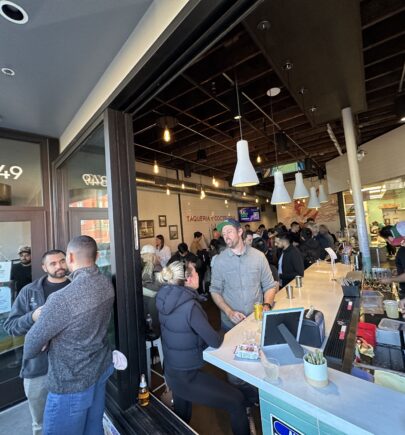Interview Series Part 1 of 3: Earn.com Co-Founder Lily Liu on How Blockchain is Evolving in the East and West, China’s Blockchain Strategy, and Her Investing Approach

This free preview of Global Coin Research is offered to our loyal readers as a representation of the unique information and insights our members receive weekly. If you’d like to receive all subscription content on our site and via our weekly newsletter, join here!
Earn.com Co-Founder Lily Liu on China’s Blockchain Strategy, How Blockchain is Evolving in the East and West, and Lily’s Investing Approach
In this interview, host Joyce Yang is joined by Lily Liu, co-founder and CFO of Earn.com. Earn.com was sold to Coinbase in early 2018 in a deal worth more than $120mn, Coinbase’s largest acquisition to date. The company allowed users to send and receive digital currency for replying to emails and completing tasks. Prior to working at Earn.com, Lily was the CFO of the first foreign-funded, private, mass-market hospital in China. Prior to that, she spent time working at Mckinsey and then later at KKR Capstone. Lily graduated from Stanford and Harvard.
In this conversation, Joyce and Lily talk about Lily’s past experience working in China and her outlook on the blockchain industry on a global level. Lily shares her views on how the crypto industry is evolving between the East and West, what China may be doing with Crypto and Blockchain, and also how she thinks about investing in blockchain globally. You can follow Lily’s Twitter here
Throughout next week, we will be sharing more with our premium members about Lily’s insights on China’s Blockchain strategy, the ongoing race between public blockchain, national governments and companies, and Lily’s investment outlook.
1# Lily’s hypothesis on what is happening in the Blockchain industry vs. what has happened historically to technology developments in Silicon Valley
“My general thesis is that in the past, nearly every major technology trend has been owned by Silicon Valley. If you think about the core layer technology, if you just sort of break it into 3 general parts, the core Layer 1 technologies as we call it today, but if you think about that originally, silicon, was really like the sort of the base layer technology. It’s kind of down south in San Jose, let’s say. And then the business models have more or less Mountain View, Palo Alto, and then that was for example, of course, Google, Facebook, whatever else. And of course, there’s an iterative process between the business model and most of the underlying supporting technology or infrastructure. And then the consumer experiments, consumer adoption experiments more recently like Uber and Airbnb, they were all basically executed here at San Francisco. And so this whole sort of experimentation cycle all happened really within like 20-30 miles of one another. And so you can say it’s centralized, it’s vertically integrated, some people might even say it’s monopoly whatever, but it’s also efficient.
And I think that’s partially driven by people’s values and preferences and their skillset. What I think is happening in Blockchain is I think if you take those three parts, I think it’s being broken apart. And so I think that the base layer of Technology is mostly being executed in the West, and that’s a big priority for Silicon Valley, and that’s what Silicon Valley really loves to invest in
[…] I think the business models are likely to come out of East Asia because in East Asia, that’s where you have very sophisticated consumer internet, companies, entire kind of ecosystems, and people are very sophisticated when it comes to various aspects of whether its e-commerce or gaming or whatever it might be. And also frankly, and I mean that really in a good way, people are a little bit more short-term greedy. And so that’s where I think you’re going to get like a faster iteration of these new business models and people will figure out, try to experiment and figure out a way to really make money with this. And I think you see a number of experiments so far. Some of them more successful than others, but there are elements in some of these experiments that are actually pretty interesting.”
2# Regulations will limit US Projects from an Innovation Perspective
“Now, the issue with both United States and also a place like China is that from a regulatory standpoint, they’re not so friendly. So the U.S. is going to heed to this accredited investor framework, which means that only roughly 5% of Americans are accredited investors. The rest aren’t, and so it’s going to be really hard to sell this stuff to the 95% of Americans.
And then if they are deemed securities and that’s still being figured out, but if they are deemed securities, then it’s also illegal to give away these tokens to people, because people thought about this in the 90s and it’s incumbent upon the issuer to be really very disciplined about that. So people are definitely not even going to want to give it away. So there goes the airdrop idea, if they’re all securities.
[…] So essentially in the U.S, it’s not looking great when it comes to consumer adoption because you can’t sell it to most people and you can’t really give it away. And so the only sort of a couple of channels that are left in there is; one eventually will be that the Bitcoin be listed as an ETF, probably in a few years, I hope. […] But that’s not a massive consumer adoption channel today. So, therefore, I think consumer adoption of cryptocurrencies in the United States is going to be likely… it’s just not going to be that rapid. I don’t think we’re going to have a hockey stick type of thing.
….So I think that in the U.S. it’s going to be fairly limited for consumer adoption, to be fairly limited for those reasons, and then I think in obviously in East Asia or specifically China, it’s also going to be very limited because the government wants it to be limited, for myriad reasons we could talk about. So, therefore, I think that when it comes to consumer adoption, the most kind of fertile ground for that is in developing regions. So I think Southeast Asia is probably number one where you have fairly well-functioning economies and then also, and like you know the rule of law, but then you also have more of a need for this stuff for solving everyday things. So payments don’t work very well, or they don’t work as well in some of these countries as they do you know here. Here, we don’t really have a problem…”
3# The preexisting frameworks for technology and product developments that Silicon Valley espoused will no longer work as well in a decentralized world
“So therefore I think that you know this market [western technology] makes a great base layer, and consumer business models will likely be thought out and experimented within East Asia. And then the experimentation is probably going to take place in places like Southeast Asia, Africa, Latin America, where there’s sufficient digital penetration so you can experiment with not just the payment stuff but then also potentially sort of consumer outstanding a great aspect of crypto. I don’t know exactly what that looks like, but I think that that’s going to get figured out in the next couple of years.
So that’s my observation, that’s my perspective, I could be entirely wrong, but then what I think is interesting about that is it’s [blockchain development] actually not so efficient, it is decentralized, it is distributed. And so you kind of check that box and you come to the whole ethos of this of this ecosystem, but it might actually be difficult to sort of create those closed loops of feedback such that the infrastructure service application and then you sort of have that iterative sort of development process, because if you’re a building Layer 1 protocol here [in the US] and you sort of prioritize certain features but then your users are sitting halfway across the world, in a culture every day whatever context, which is completely foreign to you, does that matter? I think it does, because I think that ultimately these protocols still have to be sort of tailored towards whatever their use case is, or at least have to sort of evolved over time to fit that use case. And if the people behind them, which were between sort of beginning protocol and then users are so different, I just wonder what that means for the development cycle, efficiency of adoption, and relevance. So that’s just one thought that I have.
[… ] But like ultimately, the open-source protocols is still a product of sorts. And it’s designed in a certain way to prioritize some features over others, and the question is just what drives that project prioritization, and how is that made relevant or not to different cohorts of end users around the world. And some of them want payments and remittances, others want more performance for smart contracts platforms that prioritized privacy or don’t prioritize privacy, you know, TPS versus privacy and all sorts of other features.
And so to me, that’s an open question that I think is being worked out right now, and it certainly will be worked out over the next couple of years. I think that you know outside in, it seems like one of the efforts to sort of try to scale something globally is for example what EOS is doing where they have, probably too much money, and they’re using that to seed all these ecosystems funds in every region around the world. And so maybe that’s modern how replicable it is because it presumes you have 4 billion dollars to start with, but that’s a separate matter. “












